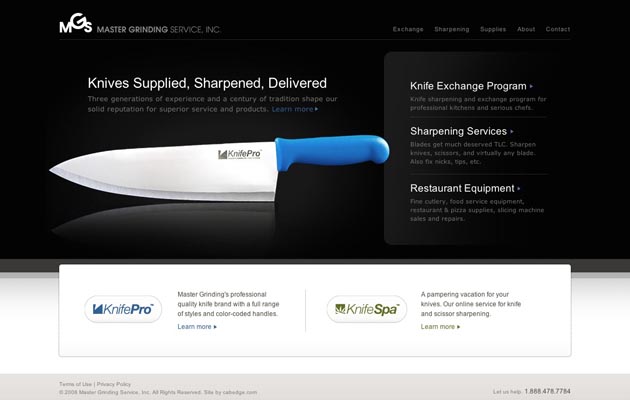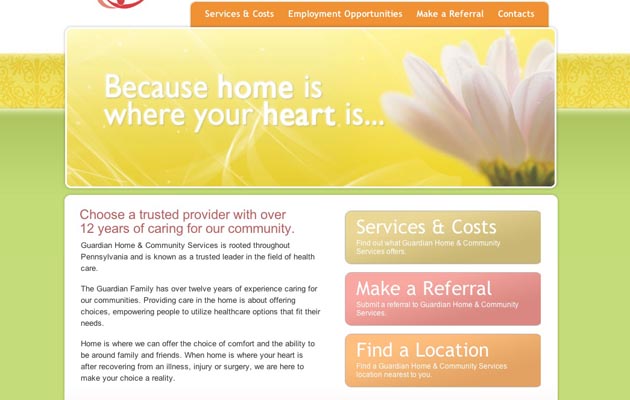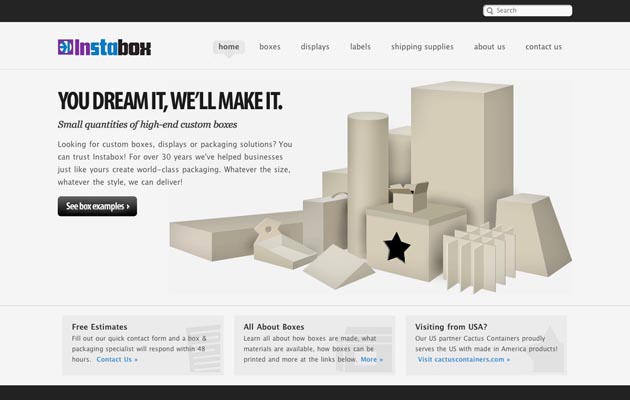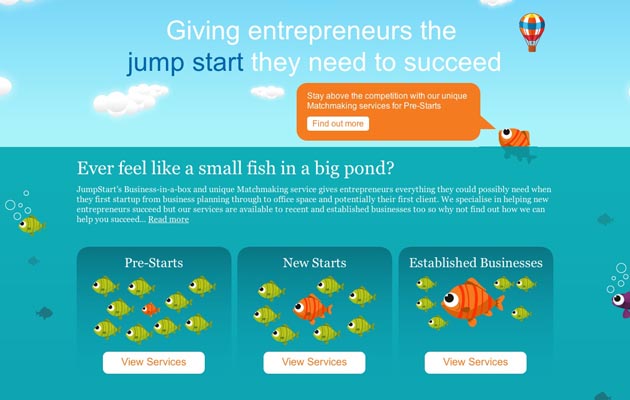On the Right Path
August 2009
By The Craftsman
When I was in college, I had a professor who spoke a lot about the importance of wayfinding. He was especially interested in how the Department of Transportation studied design elements such as typography and contrast to discover the best font and colors to use on their signs. When you drive down the interstate, those big green signs with white lettering make navigation pretty easy. Or consider the wayfinding system of a large airport. Getting from terminal A to terminal D would be a nightmare without all the signs helping us along the way.
The core function of good wayfinding is to get a person from point A to point B, quickly and efficiently. In order to do that, a person navigating the system should need only to look for signs to point them in the right direction. Just as an exit sign tells an interstate driver where to get off, the visual cues on a well designed homepage should direct a visitor onto the right path.
Why It’s Important to Funnel Visitors
It is the job of the homepage to quickly funnel users to the information they need the most.We often hear the term “funneling traffic.” It is usually used in the context of getting people to visit a site from the outside via search engines, social media or a traditional marketing campaign. But it is equally important to funnel traffic once they get to your site. Your company may have several types of audiences, and you need to speak to each one in different ways. The type of information provided and the tone in which it is presented will be different depending on the audience.
A site that tailors its information to specific audiences needs a way for those audiences to quickly identify which category they fit in or which area they are most interested in. It is, therefore, the job of the homepage to do that efficiently.
Success in this area means getting a visitor off the homepage and deeper into the site—where you can convert them from a visitor to a customer or fan. It also means protecting them from purposeless information that gets in the way of what they’re really looking for.
Know Your Audience
Before you start funneling visitors you need to identify your audiences. By knowing your target audience, you will be more confident in knowing how to connect with them. Again, your site may have several target audiences. A healthcare site has to accommodate both patients as well as medical professionals. A nonprofit organization has to accommodate people who want to volunteer their time, those who want to donate money, and those who need to use the service the organization provides. All of these audiences have unique needs and specific requests—but before they can become more than a visitor, your site has to give them what they're looking for. The power of your site relies on your ability to focus on your audiences.
Focus Your Funneling
We’ve all been there: stopped at an intersection, not knowing which way to go. One road with two names. Two roads with one name, but going in different directions. Sometimes you just pick a road and see what happens. And sometimes you get lost and have to turn around—something you certainly don’t want a visitor to your site doing.
It's natural for a business to want to accommodate every single visitor that comes to their site. Doing this, however, can quickly lead to a cluttered homepage and information overload. Or, in our transportation analogy, an intersection just like this:

If your homepage looked like this, most visitors would simply hit the back button and leave your site, not only confused and turned off, but more important, with a negative opinion of your company as a whole.
If your site has many types of people visiting, it is important to identify the characteristics of your core audiences in order to quickly direct your most important traffic to where they need to go. This will keep your homepage clean, simplified and actually make decision making easier for the user. Visitors given 3 choices based on core audience characteristics—as opposed to 10 choices based on characteristics for every visitor—will be able to identify their needs and navigate more quickly.
Your homepage does not need to encompass every detail about your company or product. Statistically, only 30% of a visitors time is spent on the homepage. The rest is spent on deeper level pages that are better equipped to handle the needs and interests of your visitors—and move them to action.
Give Them What They Like
Once core audiences have been established, you need to determine how you want to motivate them and what actions you want them to take. It is not as simple as saying, “visitor x goes here and visitor y goes here.” You need to know what those visitors are interested in—what motivates them to delve further and eventually cause them to take action or reach a conversion point. Audiences may be influenced by statistics, testimonials, free trials or product features. By knowing what motivates your audience, you will know how to quickly grab their attention and get them to
want to take action.
So what kind of action do you want your visitors to take? Of course the ultimate action is often financial, whether that is buying a product or service or donating money. But there are other actions that can facilitate that final goal. You may want first-time visitors to download a demo, take a tour or request more information by filling out a form or signing up for a newsletter. Or perhaps you want to drive people to a physical store using a “find the nearest location” feature.
Bringing It All Together
Now that you know the who, how and why, it’s time to bring everything together in a killer homepage design that will not only look great, but function seamlessly as a visitor’s guide to your site.
Many well-designed sites begin with a large introductory headline and a brief opening paragraph that gives the visitor a snapshot of what the company is about or what it is selling.
The funneling occurs with individual modules that target a specific audience. Designs should be clean and contain good contrast to quickly identify elements. Headlines should be specific, leaving little doubt who the following information is intended for. Typically, “more” or “continue” buttons are used, prompting the visitor to explore the next level of the site. Often pictures of a product or other graphical elements are used to entice the visitor into wanting more.
Here are examples of sites that do this well.






Conclusion
Your homepage is not only a first impression, but the starting point to an experience. A good homepage is a spring board that motivates people to explore more important areas of your site. It clearly direct visitors to the information they need the most to get them to a final destination. And if their journey is a pleasant one, you're one step closer to a repeat visitor, fan, and even customer. Happy trails!
Fame Foundry's Craftsman works with passion and meticulous care building intuitive interfaces, modern style and refined aesthetic.